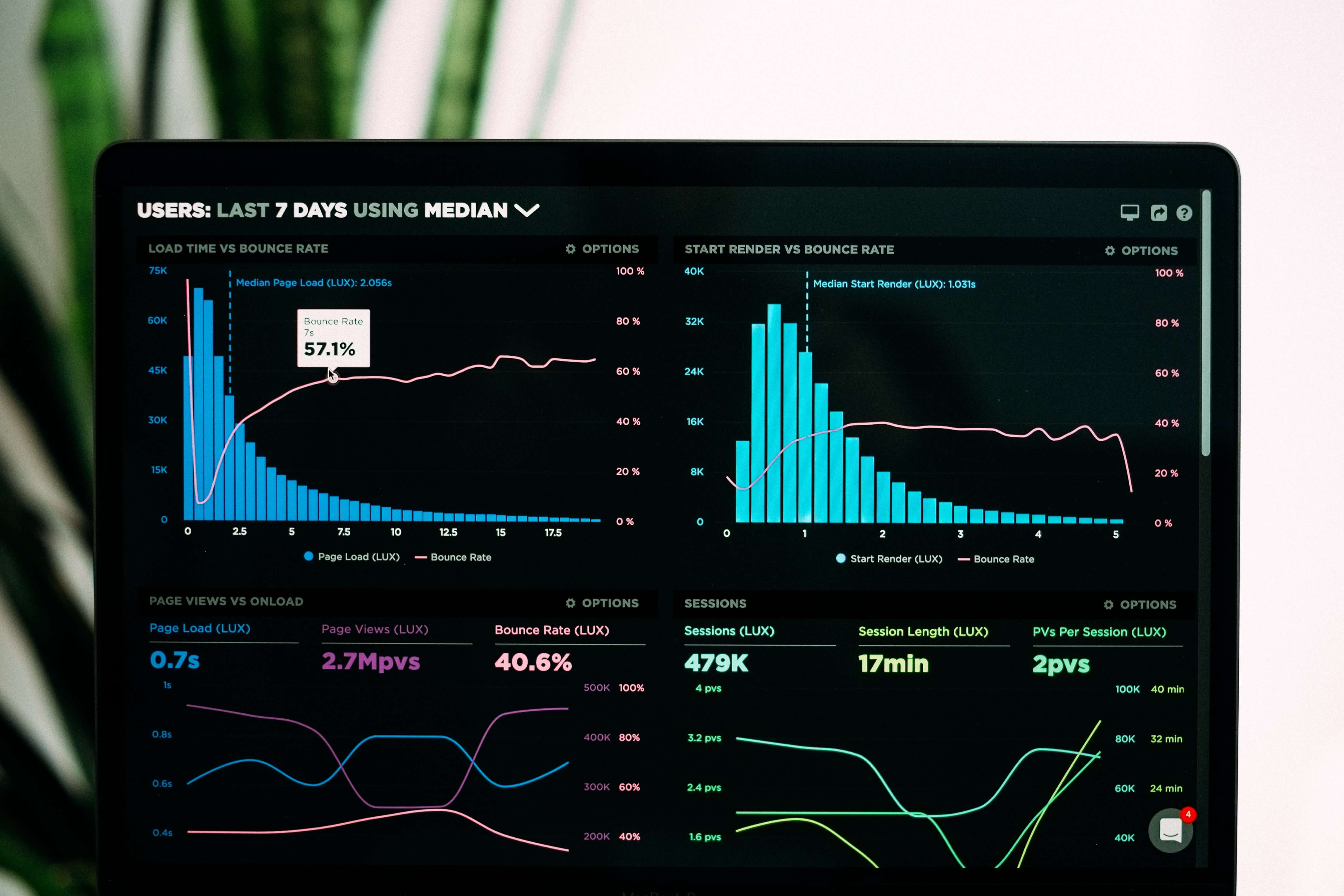Performance marketing is all about defining exactly how much value each ad, campaign, and listing brings. It takes a lot of skill and know-how to understand the seemingly countless factors that influence returns. Plus, product marketing and sales add another level of complexity. In these cases, there’s not just usual marketing topics like ads and targeting; there’s also the products and their presentation.
In order to increase sales (and feel confident in your marketing efforts!), you may want to take a closer look at your product content. The information that appears on Amazon product pages, Facebook ads, and other channels, can help determine whether or not a user becomes a customer, thereby having a direct impact on your ROI.
In order to help you drive more traffic and revenue, let’s examine the key measurements that will help you calculate the ROI of your product content. These metrics are particularly valuable for any kind of marketer as well as those who manage customer-facing product information.
The key metrics
Because there’s no one, single way to measure ROI in ecommerce, we’ll need to break ROI down into a few different layers. We’ll start with growth, noting the number of users your content can reach; then we’ll look at conversions and how convincing your data is in turning shoppers into customers; lastly, we’ll get to overall costs and the bottom line of your ads or listings.
We won’t be using the standard ROI formula here, as it seems to leave out too many factors and can be misleading. Instead, we’ll try a more holistic approach, focusing on the changes in our returns over time.
The importance of tracking over time
Your exact CPC or ROAS at any given point in time is important. However, perhaps more important is how that number changes over time. Performance marketers are great at optimizing their assets and campaigns according to previous learnings. They need to do this because users are always changing and costs are always fluctuating. How you perform now should inform what you do next; and your future results will demonstrate whether or not those optimizations are working.

1. Scale and reach: how many customers see your products?
Is your product content helping you scale and reach more customers? Investing time and effort in product information should have a pay-out. You need to know that your product sales are scaling and that you’re always gaining visibility across your touchpoints.
Agile data can affect your product visibility by helping you
- Reach new channels as they come, without wasting time and resources
- Easily localize products for region-specific channels
- Get new products, and updated information, online quickly
To understand your own product data agility, start by asking yourself: how much does it cost to expand to new channels, update listings, or launch products on your channels? How much time is used, and by how many individuals? There may not be an exact number, but, chances are, it can take a number of weeks for your IT team or agency (if you use an agency) to set up new channels. These are work hours (and costs) that can be directly related to the product content.
On the other hand, you can also consider how much more revenue would be generated by quicker scaling and market share growth. If you get to more channels faster, and publish products more quickly, you can directly drive up visibility and impressions. You can use this formula to better understand how much additional revenue you could drive just by being agile:
[Additional revenue enabled by agile product content] = [Difference in time to market] x [Total SKUs launched] x [Average daily revenue]
Case [studies] in point
Peak Ace was able to increase impressions on Google Shopping by 40% just by making optimizations to their feed.
With better product content management, Expand Online was able to reach a new market and get 15,000 products on Amazon in 24 hours and start selling immediately, drastically reducing the internal resources required to get online.

2. Sales and revenue: how many users are converted to buyers?
Visibility, CPC, ROAS—these are all great ways to help forecast revenue. However, product ads and listings should also lead to revenue. This can be a particularly difficult metric to measure in marketing. How can you know what drove a sale? What role did branding play overall? How many touchpoints did it take to turn a browser into a buyer? Most teams cannot answer these questions with absolute certainty.
However, by measuring the impact of product content and changes, over time we can see the impact it has on the bottom line. Start by determining the basic, expected results of your ads and listings. Then, follow up, always tracking sales fluctuations, especially in reference to any product content optimizations.
For example, you just completely refreshed your product listings. New titles, descriptions, images. Over the following days and weeks, it should become clear whether or not those changes directly impacted revenue. Of course, this may scale over time (as users are now reaching touchpoints with higher quality data), but that’s a metric to be considered further down the road.
To calculate this number, simply use:
[Revenue related to product content changes] = [Revenue made following optimizations] - [Revenue before optimizations]
*In order to calculate a number that is accurate and valuable, use campaigns that are similar. Comparing sales driven while bidding is increased, over a holiday, or across different channels could be misleading.
Further metrics to consider reviewing in combination with revenue
- Average order value
- Total revenue
- Abandoned carts and returns
Case [study] in point

3. ROAS: how strong and efficient are your ads?
This is one very important, and very unique, metric for understanding the ROI of your product content. Good product content can lead to great returns; poor product content can lead to greater costs. Once you understand your normal ROAS, you can start testing the role your product content plays in your bottom line.
- Start by recording ROAS and any other finance-based ad metric you usually follow.
- For example: CPC, CPA, CPM
- Then make specific, targeted changes to your product content.
- You may add brand names to product titles, include shipping detail attributes, or clean up descriptions.
- Allow one week to pass before checking the chosen ad metrics again. Has ROAS or other metrics changed?
As with revenue, a simple comparison of returns before and after optimizations can help quantify product content ROI. For example:
[CPC change driven by product content] = [CPC following optimizations] - [CPC before optimizations]
By adding the results to your general reporting and understanding of how your ads perform, you can draw clear conclusions about the performance of your content. Hopefully this will help you say (with confidence!) how valuable product content is to your campaign. That will allow you to determine how much time to invest in optimizations or whether it is in need of a deep cleaning.
Case [study] in point:
After the marketing team at Melia made changes to their product content, they found they were able to increase ROAS by 6.7%just through optimizations.
Putting it all together
The final step is perhaps the most exciting and it will require the most skill. It’s time to put all of the above numbers together to understand the real ROI of your product content. Performance measurements in all of marketing is holistic and goal-oriented. It’s never just about CTR or number of impressions. It’s not even just about sales. Shoppers may still cost more to acquire than they’re worth, or they may return products because they were not clearly represented.
The importance is the goal. Is the goal visibility, sales, clicks, conversions, or something else? This will determine how you should interpret any metrics. Let’s break it down into three key goals and what to do for each.
Visibility: Focus on scale, reach, and impressions. Does your product content enable you to move with agility and reach new channels quickly?
Revenue: Focus on sales and marketing costs. How can content optimizations lead to conversions (and not just impressions).
Minimizing costs: Focus on CPC (or CPA, etc.) and CTR. Is your product content strong enough to achieve high ranking on channels? Is it enticing shoppers to click and is it coherent enough to lead to conversions?
All of these make up the ROI of your product content. If the returns seem to be unimpressive, or even so low they’re problematic, there may be an issue with the way you manage product content. So, let’s talk about our management methods too before we finish.
Increasing product content ROI with better feed management
No matter what your goal, Productsup can help you achieve it. Using automation and drag-and-drop tooling, we make it easy to locate missing content, apply bulk optimizations, and get your feed tailored for each and every target channel.
Productsup also offers a unique ROI strategy tool to help you quickly make optimizations based on metrics like ROAS, CPC, or anything else you track. If you want to turn up your returns, become more agile, and make the most of your product data, we can help. Learn more here.

![[WP Import] How to calculate the ROI of your product data in order to drive more returns](http://images.ctfassets.net/q17uls4wkkdz/YPPz38eYTdo3PI21Je7Bz/955ad5b7dda9583ceab1c2cc699e5cc1/19-06-18_How_to_calculate_the_ROI_of_your_product_data_ft_image_800x500.png?w=1200&h=675&fit=FILL)